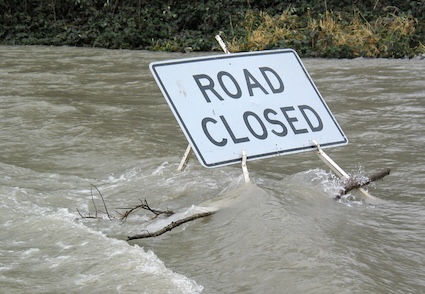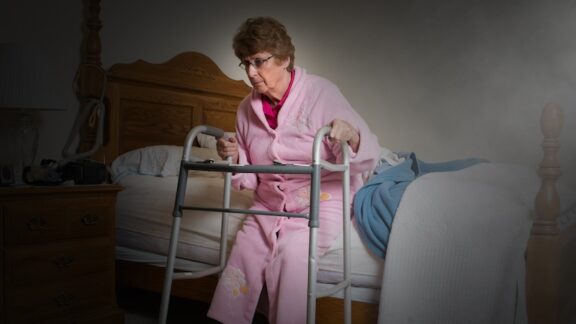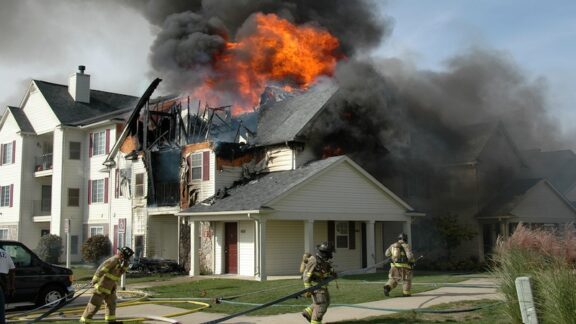Older adults are more vulnerable to harm from natural disasters, so emergency preparedness planning for seniors is essential, whether they are aging in place or living in a retirement community.
In September 2024, Hurricane Helene flooded parts of western North Carolina, leaving many residents isolated without power, water, or contact for days – including senior living facilities. The disaster highlighted the life-threatening risks to all, and especially to senior facilities that lack preparedness and communication.
Elderly adults are especially vulnerable, since many rely on electric-powered medical devices and refrigerated medications. Cognitive decline, sensory impairments, and chronic illnesses can further impact their ability to react quickly or evacuate safely. They’re also extra sensitive to temperature extremes and may have mobility challenges.
Floods, wildfires, snowstorms, and other disasters require personalized emergency preparedness planning for seniors. According to Ready.gov, only about one-third of older adults have created an emergency plan. With thoughtful preparation and clear communication, families and caregivers can make plans that will help keep seniors safe and connected during disasters.
Build a senior-specific emergency kit
“Be ready to move quickly by preparing a ‘go bag’ with essentials such as a few changes of clothing, toiletries, personal identification, phone charger, medications, and medical history,” recommends Constance Sablan, senior living professional. “Include comfort items like blankets and favorite books.”
For seniors aging at home, Jennifer Adlakha, content writer in the senior living space, suggests “having a ‘cheat sheet’ with phone numbers, plenty of gas or alternate transportation, and a lodging plan.”
The Federal Emergency Management Agency (FEMA) recommends that every household have a basic emergency supply kit with nonperishable food, water, flashlights, batteries, and a first-aid kit. For seniors, that kit should also include:
- Medications: Keep at least a week’s worth on hand. Include a printed list of all medications, dosages, and prescribing physicians.
- A way to store refrigerated meds: For items that are temperature sensitive, such as insulin, keep a small cooler and a thermometer in the kit, with reusable ice packs at the ready. A cooling wallet or battery-operated mini fridge may also be a worthwhile investment. Talk with your pharmacist about how long specific medications can stay at room temperature and ask about emergency refills.
- Mobility and medical aids: Include extras of anything the senior relies on daily: batteries for hearing aids, oxygen supplies, spare glasses, a mobility device, etc.
- Personal documents: Store copies of ID, insurance cards, medical history, up-to-date prescription list, and emergency contacts in a fireproof and waterproof pouch.
- Sensory-friendly tools: Noise-canceling headphones, magnifying glass, or communication boards are helpful for those with hearing, vision, or cognitive challenges.
- Comfort Items: A blanket, favorite snacks, or a book can help ease anxiety during times of stress.
Keep the items in an organized backpack that can be easily accessed in a hurry. For items such as medications that can’t be completely stocked ahead of time, include a visible, easily readable note on the outside of the pack as a reminder to pack them before leaving.
Related: How to Navigate Your Medicare Advantage After a Disaster
Plan for communication and connection
 Social isolation is a major risk during emergencies, as seniors can become cut off. To head off this problem, compile and laminate a list of emergency contacts, enroll seniors in local emergency alert systems, and ensure that phones stay charged. For those living alone, identify trusted neighbors who can check in regularly, especially during weather events, and practice using 911, medical alert devices, and other tools.
Social isolation is a major risk during emergencies, as seniors can become cut off. To head off this problem, compile and laminate a list of emergency contacts, enroll seniors in local emergency alert systems, and ensure that phones stay charged. For those living alone, identify trusted neighbors who can check in regularly, especially during weather events, and practice using 911, medical alert devices, and other tools.
Understand senior community plans
Whether your loved one currently lives in a senior community or you’re considering one, ask about their emergency preparedness plan. “Simply asking the leader to explain the plan is a great start,” says Jessi Weldon, Sales & Marketing EVP at Primrose Retirement Communities. “Which organization do they partner with if they need to evacuate? How does the pharmacy respond? How do they communicate updates to families?”
Other questions include:
- Does the community have a comprehensive disaster plan, including evacuation procedures, shelters, and emergency supplies?
- How do they account for residents during evacuations?
- How are residents with mobility or cognitive challenges assisted during emergencies?
- Are staff trained in CPR, emergency response, and crisis communication? How often does the facility stage emergency drills?
- Do residents have personalized emergency kits, and does the community assist in creating them and retrieving them when necessary?
- How does the facility handle prolonged power outages? Do they have generators? What’s the plan for maintaining refrigerated medications?
Sablan adds:
- How does the community notify families in the event of an evacuation or emergency?
- What are the procedures if a resident has a pet? Are pets evacuated with their owners?
- How will the community manage medications or specific care requirements for residents during an evacuation?
- Where are the designated shelters for residents in case of evacuation and how will they be transported there?
Transparency and preparedness are non-negotiable topics. If a community cannot answer questions clearly, it may be worth reevaluating, especially in areas at higher risk for natural disasters.
In 2025, a coalition of senior industry leaders released draft emergency preparedness guidelines to standardize best practices in assisted living settings. These include recommendations for appointing an emergency preparedness coordinator, conducting hazard vulnerability assessments, and establishing strong response and recovery plans. As these guidelines are finalized, they may become the benchmark by which many communities are evaluated.
Related: Fire Safety at Senior Living Communities
The aftermath
Floodwaters can carry harmful bacteria and mold, which continue to grow and contaminate surfaces, even after the waters recede. These can pose significant respiratory risks, especially to seniors with existing lung conditions or weakened immune systems. After a flood, make sure the home or living space is properly dried and cleaned, and that any respiratory symptoms (such as coughing or shortness of breath) are evaluated by a doctor promptly.
Whether your aging loved one lives independently or in a care community, taking time to plan now ensures they won’t be left vulnerable later. In emergency preparedness planning for seniors, start with the basics and tailor plans to individual needs. Be sure to update them regularly as medications change, food expires, etc. Emergencies can be overwhelming, but being prepared brings peace of mind and greater assurance of safety.
Related: Be Ready with a Hospital Go Bag





